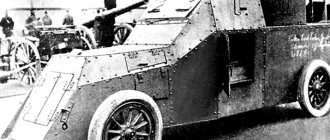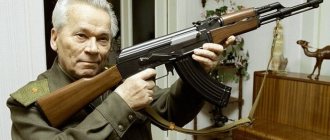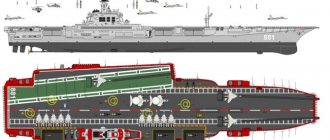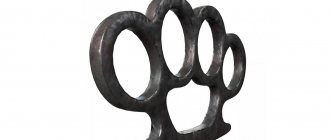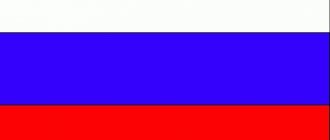A person who recognizes war not only as inevitable, but useful, and therefore desirable - these people are terrible, terrible in their hatred and perversion
L.N. Tolstoy
The period of Alexander II's reign represented grandiose reforms in the history of the Russian Empire. By carrying out these reforms, the emperor tried to overcome Russia's lag behind the advanced countries of the world. One of the most ambitious, both in terms of time and results, was the military reform of Alexander 2, which was prepared by Minister of War Dmitry Milyutin. This article offers an overview of the key areas of military reform, as well as its main results.
Military reforms of Ivan III "The Great" and Ivan IV "The Terrible"
Soldiers from the time of Ivan the Terrible.
The first major changes in the organization of military affairs in Rus' occurred at the end of the Middle Ages, as in many other European states. This process was started by Ivan III “The Great” (reigned from 1462 to 1505), who launched the practice of distributing land plots to servicemen - career military men, as they say now. The practice took root, and by the time Ivan IV ascended the throne (30 years later), Russia had a huge army of 300 thousand people at that time - no other European state had such an army.
Ivan the Terrible continued his efforts to strengthen the country’s power in the period from 1550 to 1571. carried out the first “real” military reform, which began with a decree of October 3, 1550 on the division of lands around Moscow between 1000 landowners who occupied key command positions in the army. The results of this work were:
- Streamlining the recruitment and military service system.
- Organization of centralized army control.
- Creation of a permanent Streltsy army, the basis of the future regular army.
- Unified centralized army supply system.
- Organization of the border service.
Reasons and background
The need to increase the combat effectiveness of the army - during the first half of the 16th century, the Kazan Khanate carried out about 40 invasions that devastated many Russian cities.
The centralization of power in the newly formed Russian kingdom also required improving the quality of the state's military formations. Dependence on the local army - the noble militia played a central role in the army, but its discipline left much to be desired; the tsar realized the need to lay the foundations of a regular army.
The threat of the Crimean Khanate - from the southern borders the territory of the Russian kingdom was regularly raided by the Crimean Tatars and Nogais, to effectively combat them it was necessary to continue the creation of the Zasechnaya Line (started by Elena Glinskaya)
Military reforms of Peter I
A lot has changed in the world over the past century and a half. Soldiers of Peter's time.
The reformer Tsar took up the task of reforming the Russian armed forces with his usual zeal. Having adopted an essentially medieval army at the beginning of his reign (by the way, the Russian army at that time was neither backward nor the worst in the world, and fought quite well along the entire length of its borders), over the course of 30 years he turned it into the most modern and effective in the world. continent. The main results of the military reforms of Peter I:
- Creation of a regular army and navy based on a conscription system.
- The abolition of previously existing ones and the creation of new unified formations, clearly divided into types of troops, dressed in the same uniform, armed with the same weapons, etc.
- The emergence of army regulations and the introduction of a unified system of military training and education.
- Centralization of military command.
- Establishment of the position of commander-in-chief, creation of field headquarters.
- Opening of military schools for officer training.
- Carrying out military judicial reforms.
Advantages and disadvantages
What Peter the Great wanted to do was completely realized. After this, no one in the world could doubt the power of Russia and its victory over any army. But the changes had both their pros and cons.
Advantages of the reform:
- The won Northern War opened access to the Baltic Sea, and also established the status of an empire for Russia.
- Organization of production to independently supply the military with artillery, uniforms, weapons, and ammunition.
- The organization of full-fledged regular troops that could not only fight, but also valiantly win.
- Creation of a new educational direction, namely the commissioning of new educational institutions for teaching modern crafts.
- A powerful navy, which had never existed in Russia until that moment.
The significance of the reform is difficult to underestimate: after the modernization of the supply and organization of all land and sea forces, Russia received a modern fleet and army at its disposal, which subsequently affected the success of various campaigns and the expansion of the country's territory.
But the reform had a number of disadvantages:
- Significant financial costs that negatively affected the lives of ordinary Russian people.
- Complete employment of peasants in production enterprises.
- Service was mandatory for nobles and was initially meant to be lifelong, but after a while it became 25 years.
This was the result of Peter's main transformations, which led to the organization and strengthening of the troops. The rank and file consisted primarily of the peasant class, and the officers were nobles. The creation of the army and the methods of its training were constantly improved, taking into account the enormous combat experience that was gained during the Northern War.
Military reforms of Milyutin (Alexander II) (1860-70)
The uniform of Russian army soldiers of the 19th century.
Minister of War Dmitry Alekseevich Milyutin, after the failures of the Crimean War, correctly assessed the situation and demanded immediate reforms in the army. The Crimean campaign clearly showed two weak points of the Russian army: a sharp gap in weapons from France and England, poorly organized logistics and supply systems for troops. To the credit of the tireless minister, he coped with his tasks, once again raising the army to the highest standards. The result of a decade of reforms was:
- Replacement of conscription with general military service.
- Creation of an army reserve.
- Formation of military districts (15 districts).
- Modern army regulations.
- Re-equipping the army with rifled weapons and artillery
- Reorganization of combat training of troops and officers.
- Establishment of military gymnasiums, military and cadet schools.
- Military judicial reforms.
Military reforms 1905-12
The Russian army after the reforms of 1905, on the threshold of the First World War
A new defeat, this time during the Russo-Japanese War of 1904-1905. gave rise to a new round of reforms. It was with the army, reorganized at this stage, that the country had to enter the First World War. The main task solved by this package was:
- Strengthening the centralization of military command.
- Introduction of a territorial troop recruitment system.
- Shortening the terms of service for junior ranks and a significant influx of “fresh blood” among officers.
- Adoption of new programs for military schools, new service regulations.
- Re-equipping units with new artillery pieces.
- Creation of heavy field artillery.
- Significantly strengthening the role of engineering troops and improving army supplies.
"Revolutionary" military reforms of 1917-18
A revolution is a time when everything around takes on very strange forms. Including uniforms.
The birth of the “indestructible and legendary” Red Army on the ruins of the imperial one. This reform affected mainly organizational aspects, and seriously shook up both the officer corps and the troop command and control system itself. Many elements of the “revolutionary reform” from a modern point of view seem completely absurd, and its authors themselves soon became convinced of this. In the actual “military” plan, the Bolsheviks did not invent anything new and continued the line that had already been formed before them. Military reforms 1917-18:
- Abolition of military ranks and insignia, equalization of rights for officers and enlisted personnel.
- The army is governed by decisions of soldiers' committees and councils of soldiers' deputies. Commanders - up to the regiment commander - are elected by the general meeting of units of their direct subordination, commanders above the regimental level - at meetings and congresses of formation committees.
- The army is disbanded and created anew, on the principle of voluntariness and recommendations from military committees, party and trade union organizations.
Less than a year after the indicated reforms, in April-May 1918, the principle of voluntary conscription was abandoned in favor of universal conscription, and commanders began to be appointed “from above” rather than elected.
V.V. Putin on the reform of the armed forces 2020-2021 in Russia: latest news
The discussion of the new reform to reduce the armed forces by 10% and optimize the expenses of the Russian Ministry of Internal Affairs (police) for 2020-2021 attracted the attention of the President of the Russian Federation V.V. Putin.
No decisions have yet been made to reduce funding for the Ministry of Defense and other security agencies, said Russian President Vladimir Putin. “We are not planning any decisions yet; we are not planning to reduce or increase any time frames for anything. This is just one of the proposals from the Ministry of Finance, it has not even reached me yet. These are all discussions within government departments among themselves,” Putin said on Thursday at the annual meeting of the Valdai international discussion club. “When making final decisions, I will, of course, proceed from the real situation in the economy, from the real situation related to the incomes of citizens, including law enforcement officers, military structures, military organizations of the state, the ratio of their incomes to the civilian sector, so as not to there was a distortion in the labor market. There are many factors here,” the president added, informs the portal finmarket.ru. According to him, the Ministry of Finance constantly offers this. “There is a crisis, there is no crisis - the Ministry of Finance constantly advocates optimizing costs,” he explained. “In general, almost all ministries of finance in all countries do this; the Russian Ministry of Finance does not offer anything original here,” he said. The day before, reports appeared in the media about proposals from the Russian Ministry of Finance to sequester defense spending. Meanwhile, the press secretary of the Russian President Dmitry Peskov said that no decisions were made to optimize the budget, providing for the reduction of positions in the Armed Forces. Details are in the daily reports on the portal “DZHURKA” https://silovik-inform.ru/
Let us recall that in October 2022, the Russian Ministry of Finance sent to the Security Council a draft reform to reduce military personnel in 2021, based on budget optimization, the Izvestia newspaper reports, citing a copy of the document. According to sources in the Ministry of Defense, the military department actually received proposals from the Ministry of Finance. First of all, the innovations propose reducing the number of military personnel by 10 percent. As Lenta.Ru writes, based on the fact that in the decree of the President of the Russian Federation V.V. Putin of 2022, the number of troops is set at just over 1 million people. The reduction in the staff of the Armed Forces, according to the plans of the Ministry of Finance, should be due to free vacancies and the transfer to the civilian service of persons not related to the performance of combat missions, that is, doctors, personnel officers, lawyers, financiers, teachers, and rear employees. Another way to save money, proposed by the Ministry of Finance, is to increase the period of use of material property or replace it with monetary compensation. Moreover, as the publication writes, in the event of early termination of the contract, the serviceman will have to reimburse the cost of the military uniform “in proportion to the period of wear.” The reform may also affect the nutrition of military personnel. The Ministry of Finance proposes to provide them with contract soldiers only in field deployments and on combat duty. Another point of reform is the proposal to eliminate the annual indexation of military pensions by 2% above the inflation rate. In addition, it is proposed to increase the length of service required to obtain it from 20 to 25 years. Moreover, the Ministry of Finance wants to remove from this period study at a military university, which is now included in it. Due to these changes, the period required for officers to retire may increase by a total of ten years. As Oleg Zherdev, the founder of the association of lawyers of law enforcement agencies “Guard”, said in an interview with Izvestia, the proposal not to include years of study at a military university in the length of service contradicts the laws “On the Status of Military Personnel” and “On Military Duty and Military Service.” “The cadets begin their studies after taking the oath. During training, they are involved in solving the problems of military service, they take guard duty, patrols, and guard garrison guardhouses. They are subject to restrictions like other military personnel. Unlike students, they have only one month of vacation in the summer,” the expert noted. In addition, the Russian Ministry of Finance proposed increasing the service life required to obtain a military mortgage account: funds are transferred to it every month, which the employee can use in a few years as a down payment on the mortgage. Now it opens for officers immediately after graduation, and for contract soldiers - after three years. Financiers are going to increase these terms to five years for officers after graduation and to eight years for contract soldiers. The day before it became known that similar proposals from the Ministry of Finance were received by the Federal Service of National Guard Troops. A copy of the document was also at the disposal of Izvestia. These proposals repeat verbatim the text sent to the military department, but addressed to the head of the Russian Guard, Viktor Zolotov. As Kommersant wrote, citing sources, the Ministry of Finance proposed optimizing costs for the law enforcement unit. Subsequently, the Security Council sent a request to several law enforcement agencies asking them to formulate their vision on this issue. A source in the central office of the Ministry of Internal Affairs informed RBC about the request received. It is noted that the ministry “is actually proposing to carry out a large-scale reform of the security bloc.” It proposed reducing the number of employees of internal affairs bodies by 10%. The Ministry of Finance also noted that this should happen through the transfer to the category of civil servants of employees of departments that are not involved in law enforcement activities. In addition, the department proposed transferring some police functions to the Russian Ministry of Labor and the Russian Ministry of Health. We are talking about coordinating the program for the resettlement of Russians from abroad, regulating labor migration, as well as control and licensing regulation in the field of legal drug trafficking. The Ministry of Finance also proposed considering the possibility of creating a single law enforcement agency based on the Ministry of Internal Affairs, to which the functions of the Federal Penitentiary Service (FSIN), the State Courier Service (SFS) and the Federal Bailiff Service (FSSP) could be transferred, subject to simultaneous staff reductions. “At the same time, the Ministry of Finance considers it necessary to consider the possibility of creating a unified system of material and technical (logistical) support for the security unit,” the material indicated. As for pensions for military personnel, as Rossiyskaya Gazeta reports, the State Duma of the Federal Assembly of the Russian Federation adopted in the first reading a bill on increasing survivors' pensions for disabled family members of deceased military personnel. According to the amendments of the Government of the Russian Federation, all disabled members of the families of fallen (deceased) military personnel will receive an increase in this pension. The document also affects the families of deceased law enforcement officers. About 1.8 billion rubles a year will be required to implement the measures prescribed in the bill on increasing pensions, Deputy Minister of Defense of the Russian Federation Tatyana Shevtsova reported at a plenary meeting in the State Duma. In the absence of such a law, families have the right only to survivors' pensions and receive additional payments to the pension only through the court. The document was proposed to be adopted in order to relieve social tension among family members of fallen (deceased) military personnel based on judicial practice. In addition, the State Duma adopted in the first reading a bill that will make it possible to provide housing for needy family members of deceased military personnel who were not participants in the savings-mortgage system. The authors of the bill were the first deputy chairman of the State Duma Committee on Defense, Andrei Krasov, and the deputy chairman of the committee, Yuri Shvytkin. The budget of the Russian Federation for 2022 and for the planning period 2022 and 2022 takes into account an increase in the level of inflation in the pay of military personnel and a number of other categories. This is 3% from October 1, 2020. The consequence will be an increase in pensions for military pensioners by the same amount. This indexation will be the third in the last eight years for military pensioners. And in the next two years, their pensions will be indexed by four percent. In general, according to the plan until 2022, military pensions will increase by 11 percent. Until October 1, military pensions will be accrued in the same amount. The head of the Defense Committee, Vladimir Shamanov, made a proposal to move the indexation date to an earlier date so that inflation does not outpace the growth of payments. However, this proposal was not officially submitted to the State Duma. In 2022, military pensions will increase again. This time the indexation will be 4%. Also this year, civil old-age pensions will increase for them. For those military personnel who have reached the age of retirement, the insurance portion of payments will increase by 6.6%, informs the portal live24.ru Not so long ago, there was a law that military pensions were subject to revision simultaneously with an increase in the pay of the corresponding categories of military personnel and employees . Growth was planned at 2% annually, starting January 1, 2013. However, in 2015 this norm was suspended. Deputies decided to extend the “freeze” until January 1, 2022. Until this date, the amount of monetary allowance taken into account for calculating the pension remains the same - 73.68%. How the system of social guarantees in the army works Military personnel, as they also say “army”, are a special category that lives by different rules than other categories of citizens. Sufficiently strict and obliging with constant readiness for any surprises. Families of military personnel are accustomed to living in a similar regime. That is why their social security, its level largely determines not only the moral and psychological state of each soldier and his family member, the personnel of the units, but ultimately seriously affects the level of the country’s defense capability. It is no coincidence that, especially recently, the state has paid such close attention to the problem of social guarantees for military personnel. National interests force us to constantly improve the entire system of providing material income and, of course, housing to those who guard the Fatherland, sometimes risking their lives and well-being. The assessment of the quality and effectiveness of adopted laws and regulations, decisions and specific steps taken on the initiative of the President of Russia and the Government has also become constant. The Federal Law of the Russian Federation “On the Status of Military Personnel” provides for such main areas of social protection as: full implementation of all rights and existing guarantees (including financial ones), as well as compensation for military personnel; continuous improvement of state institutions and protection mechanisms specially created for this purpose; protecting the health and life itself of military personnel; other effective measures that take into account the specifics of military service and specific situations during service. Increasing salaries and pensions Generally speaking, the state will allocate a considerable amount of 113 billion rubles for the social security of military personnel over the course of 3 years. At the same time, an annual indexation of wages has already been provided, which in the current year 2020 (this will happen from October 1) will be equal to three percent, and in the next two years wages will increase twice by 4%. Thanks to this, military wages will increase more than on 10%. Pensions will also increase. So, from October 1 of this year, the average military pension will increase and become equal to 26,968 rubles. What about the conscripts? Their salary will be increased to 2 thousand rubles per month (remember that, in principle, at this time they are on full army pay). And there are some nuances here. If previously the salary of a conscript was completely dependent on his position (for example, a battalion sergeant major had 1,800 rubles, and a machine gunner a little more than a thousand), now a single salary has been established for all conscripts, regardless of their position. This decision was the result of a seven-year experiment by the Russian Ministry of Defense. Another solution that provides certain allowances for conscripted military personnel. Thus, the performance of tasks associated with a risk to life and health (if we are talking about peacetime, for example, bomb disposal, rescue and diving work) provides an increase of 50%. There is one innovation for contract soldiers of the rank and file - they will now be paid "lifting" in the same way as officers and warrant officers. Medical support Since the beginning of the year, the Ministry of Defense has received the right to independently register medicines for the Russian Armed Forces. It is clear why this is dictated: military personnel performing certain tasks are subject to specific effects - they are influenced by chemical, radiation, biological and other unfavorable factors. And for treatment and prevention, other medications and means will be required here. Another news is that the Ministry of Defense will complete the creation of an entire system of military hospitals by 2025. There will be 155 of them in total. These will be the most modern medical institutions. Defense Minister S. Shoigu emphasized that the hospitals will serve, in addition to military personnel, members of their families and military pensioners. Housing and mortgages It is immediately worth noting that over the past eight years, as a result of the implementation of targeted government decisions, the creation of a special savings and mortgage system (NIS) and an organization such as Rosvoenipoteka, the queue for permanent housing among military personnel has more than halved. The new version of the law on military mortgages allows the state to pay off the mortgage loan of a serviceman who died in the line of duty in a single payment and early. New approaches have also emerged in solving such a problem as providing housing for those leaving for the reserve, but remaining to live in closed military camps. A form of support such as housing rental compensation has also proven useful and effective. The specified information concerns the structural units of the RF Ministry of Internal Affairs system from all regions of Russia: Adygea, Altai, Bashkiria, Buryatia, Dagestan, Ingushetia, Kabardino-Balkaria, Kalmykia, Karachay-Cherkess Republic, Karelia, KOMI, Crimea, Mari El, Mordovia, Sakha (Yakutia), North Ossetia ( Alania), Tatarstan, TUVA, Udmurtia, Khakassia, Chechnya, Chuvashia, Altai Territory, Transbaikal Territory, Kamchatka Territory, Krasnodar Territory, Krasnoyarsk Territory, Perm Territory, Perm Territory, Primorsky Territory, Stavropol Territory, Khabarovsk Territory, Amur Region, Astrakhan Region , Arkhangelsk region, Belgorod region, Bryansk region, Vladimir region, Volgograd region, Vologda region, Voronezh region, Ivanovo region, Irkutsk region, Kaliningrad region, Kaluga region, Kemerovo region, Kirov region, Kostroma region, Kurgan region, Kursk region, Leningrad region region, Lipetsk region, Magadan region, Moscow region, Murmansk region, Nizhny Novgorod region, Novgorod region, Novosibirsk region, Omsk region, Orenburg region, Oryol region, Penza region, Pskov region, Rostov region, Ryazan region, Samara region, Saratov region, Sakhalin region, Sverdlovsk region, Smolensk region, Tambov region, Tver region, Tomsk region, Tula region, Tyumen region, Ulyanovsk region, Chelyabinsk region, Yaroslavl region, federal cities - Moscow, St. Petersburg, Sevastopol, Jewish Autonomous Okrug, Khanty-Mansi Autonomous Okrug, Yamalo-Nenets Autonomous Okrug, Nenets and Chukotka Autonomous Okrug.
25.10.2020 20:07
Military reforms 1937-39
The Soviet army before and in the first years of the Great Patriotic War
The reforms of this period, in keeping with the times, again come down to organizational issues, mainly related to “tightening the screws,” that is, increasing the responsibility of military personnel.
- The Main Military Council of the Red Army and the Main Council of the Navy were created, dealing with issues of military development.
- Increasing the number of military districts and commissariats, creating military departments in local party bodies.
- There was an institute of military commissars, which existed until August 1940 (after that - deputy commander for political affairs, political instructor).
- The length of military service has been increased, the conscription age has been reduced, and the period of stay in the reserve has been extended.
- All armed forces personnel are required to take an oath.
- More severe penalties for desertion and unauthorized absences from the unit.
Goals and objectives
Increasing subordination and discipline - disputes among the governors regarding local rules (who will be in charge during the campaign) had to be eliminated, the order of military service should be determined, and the norms for the provision of soldiers by nobles depending on their land allotment.
It was also necessary to clarify the structure of the army. Development of artillery - without cannons, the capture of fortresses turned into a months-long siege, so each of the infantry regiments needed regimental artillery
Elected infantry regiments - the creation of the first regular troops was supposed to lay the foundation for a future professional army and diversify the functionality of current combat formations, expanding the range of tactical tasks available for solving.
Military reforms during the Patriotic War of 1914-1945.
Soldiers of the Soviet Army, 1943
Due to the fact that from the moment the Bolsheviks came to power, and as many as two military reforms, the army, instead of a more modern, disciplined and combat-ready one, became rather a very chaotic and spontaneous mechanism, the 1941 campaign began extremely unsuccessfully. The country's leadership had to correct this situation, firstly, quickly, and secondly, in conditions of ever-increasing chaos. There was no talk of any single programmatic mechanism for reform; in this short period, a huge number of decisions were made - both completely thoughtless and those that are still used in the Russian army. Military transformations 1941-1945:
- Changing the system of organization of high command, creating operational formations and army corps.
- General mobilization of all men from 19 to 55 years of age.
- A more effective structural organization of the armed forces is now: front, army, corps, division, brigade, regiment, battalion, company, platoon, squad.
- The infantry combat regulations were published (1942).
- The division of military personnel into privates, sergeants, officers and generals.
- Introduction of new insignia.
- The Main Logistics Directorate was established.
- Republican, regional and district party committees pledged to launch resistance behind enemy lines.
- The system of military tribunals became more complex and expanded.
Reform results
In general, despite some inaccuracies, the results that the military reform of Alexander 2 implemented had a huge effect on the transformation of the army of the Russian Empire. Russia's active army was reduced by 40%, which significantly reduced the cost of its maintenance. The ministry's headquarters was also reduced, which contributed to the fight against bureaucracy. The system of military districts helped make the army more organized and mobile. Mass conscription contributed to the elimination of weak and ineffective recruitment.
At the end of the material, I would like to note that the foundation of the modern army was laid precisely by the military reform of Alexander 2, which was supervised by Milyutin. I am talking now about the principles of formation of units, mobilization work, organization of ministries and departments, and so on. For the first time, Russia had an army that could be globally controlled independently and collectively, without waiting for a genius (Suvorov, Kutuzov) to appear at a critical moment and help correct the situation in the army. So, for example, it happened in the war of 1812, when Alexander 1 and his advisers did nothing but prevent the army from fighting, and the disgraced general Kutuzov saved the country. Now the structure of the army was changing. Changed for the better. This is why historians say that Milyutin’s military reform of 1874 is one of the most important transformations in Russia under Alexander II.
